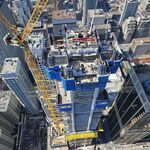This is for
@APTA-2048
You really got me scratching my head when you asked me about Finland's BYDs...
I'll provide you with a better explanation now - the only reason we have so many BYDs is because unlike Sweden, we're such a tiny market that for a while BYD and Yutong were the only manufacturers of electric buses willing to establish a proper supply chain network. MAN has a big network in Sweden, but doesn't exist in Finland. Solaris will become more prevalent. I don't know what VDL's situation is currently. Volvo wasn't a player at the time, and we have a bad history with Scania who drove our domestic body-builder out of business (Lahden Autokori).
The issue seemed to have something to do with the availability of dual rear-axle city BEBs.
For what it's worth, the Yutongs seem to be fairing alot better than the BYDs from what I've read.
Sorry to go off-topic.






